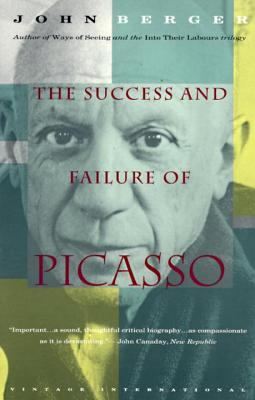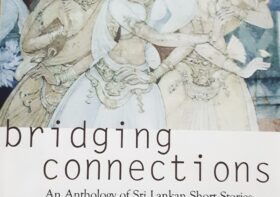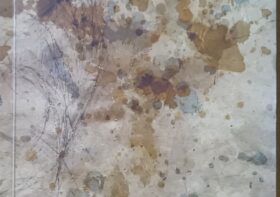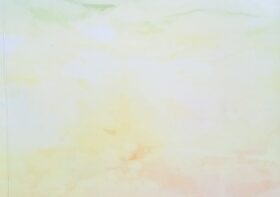The Success and Failure of Picasso by John Berger

వ్యాసకర్త: Nagini Kandala
****************
‘పికాసో చిత్రమా’ అంటూ వినిపించే సినిమా పాటల్లోనూ,’పికాసో లాంటి పెయింటర్’ అంటూ మాటల్లో సహజంగా దొర్లే వాక్యాల్లోనూ వినడమే తప్ప పికాసో చిత్రాల్ని ఎప్పుడూ చూసింది లేదు,పికాసో గురించి ఏమీ చదివింది కూడా లేదు. ఇప్పటివరకూ ‘పికాసో’ అంటే నాకు అర్థం కాని ఒక గొప్ప విషయం గురించి విన్న భావనతో కూడిన ఒక ఎలియన్ ఫీలింగ్ మాత్రమే. అలాంటిది ‘The Success and Failure of Picasso’ అన్న టైటిల్ చూడగానే ఎందుకో చదవాలనిపించింది. కారణం టైటిల్ లో ఉన్న ‘సక్సెస్’ కాదు,దాని వెన్నంటే ఉన్న ‘ఫెయిల్యూర్’. ప్రపంచ ప్రఖ్యాత చిత్రకారుడిగా ఎనలేని కీర్తిప్రతిష్టలు గడించిన వ్యక్తిలో ఇంకా వైఫల్యాలా! ఒక వేళ ఉంటే ఆ వైఫల్యాలు ఎలా ఉంటాయి! అసలివి వ్యక్తిగతమా, వృత్తిగతమా తెలుసుకోవాలనే ఆసక్తితో ఈ పుస్తకం చదవడం జరిగింది. ఇంగ్లండుకు చెందిన ఆర్ట్ క్రిటిక్, రచయిత అయిన John Berger ఈ పుస్తకంలో ఒక ఆర్టిస్ట్ గా పికాసో జీవితంలో ఆటుపోట్లని రాజకీయ, చారిత్రాత్మక అంశాల ఆధారంగా వివరిస్తారు.
మరి ఏదో చిన్న కుతూహలం తప్ప వేరే పెట్టుబడేమీ లేని కారణంగా, చిత్రకళారంగానికి సంబంధించిన పూర్తి స్థాయి విశ్లేషణలతో కూడిన ఈ పుస్తకాన్ని చదవడానికి చాలా కష్టపడవలసొచ్చింది. చాలా సార్లు గూగుల్ ను ఆశ్రయించక తప్పలేదు. కానీ కొంచెం కష్టపడ్డా పెయింటింగ్ కు సంబంధించిన చాలా విషయవిశేషాలను గూర్చి తెలిసింది. ఇక పుస్తకం విషయానికొస్తే మొదటి నలభై పేజీలు చిన్నతనం నుండీ పికాసో గురించిన విశేషాలతో ఆపకుండా చదివించాయి. తరువాత మెల్లిగా హైవే మీద వెళ్తున్నట్లున్న ప్రయాణం కాస్తా గతుకుల రోడ్ లోకి వెళ్ళిపోయినట్లు ఆయన ఆర్ట్ ను ప్రభావితం చేసిన అంశాల మీదుగా పికాసో పుట్టి పెరిగిన స్పెయిన్ దేశపు సంస్కృతి, అక్కడి ఫ్యూడల్ విధానాలు, మొదటి ప్రపంచ యుద్ధం, యూరోప్ లోని కాపిటలిస్ట్ విధానాలూ లాంటి చారిత్రాత్మక అంశాల దిశగా సాగింది. కానీ ఈ తరహా అనాలిసిస్ ను అస్సలు ఊహించని సగటు రీడర్ కి అది కాస్త కష్టమైన ప్రయాణమే. పికాసో ఆర్ట్ కీ, ఈ లోతైన సాంస్కృతిక విశ్లేషణలకీ ప్రత్యక్షంగా ఉన్న సంబంధాన్ని రచయిత పలుమార్లు సోదాహరణంగా నిరూపించినప్పటికీ, చాలా చోట్ల ‘పికాసో’ అనే నిర్ణీత మార్గం నుంచి చాలా దూరం వెళ్ళిపోయారనిపిస్తుంది. ముఖ్యంగా పికాసో వ్యక్తిగత జీవితాన్ని మంచి మాస్ మసాలా స్టోరీలా ఒక సాంగ్, ఒక ఫైట్ తరహాలో కమర్షియల్ గా చెప్పేస్తారేమో అని ఊహించి ఈ పుస్తకం చదివితే ఎదురయ్యేది ఆశాభంగమే. అలా కాకుండా వ్యక్తిగత బలహీనతలను, వ్యక్తిగత జీవితాన్ని తూర్పారబడుతూ చేసే విమర్శలకు దూరంగా అసలుసిసలు Constructive criticism అంటే ఎలా ఉంటుందో చదవాలనుకుంటే ఇది తప్పక చదవాల్సిన పుస్తకం.
14 ఏళ్ళ వయసులోనే ‘Child Prodigy’ గా పికాసో చిత్రించిన ఒక చిత్రాన్ని చూసి Provincial art టీచర్ అయిన ఆయన తండ్రి పికాసో లోని నైపుణ్యాన్ని గుర్తించి,తాను ఇక కుంచెను ముట్టనని నిర్ణయించుకుని పికాసోకు తన స్థానాన్ని ఇచ్చేసిన సందర్భం నుండి పికాసో చిత్రకళా ప్రస్థానం మొదలవుతుంది. తండ్రి వద్ద నుండి దొరికిన ఈ అరుదైన గౌరవం ఆ పసితనంలో పికాసో వ్యక్తిత్వరూపకల్పనకు విస్మరించలేని విధంగా దోహదపడిందంటారు.
To the prodigy himself his power also seems mysterious, because initially it comes to him without effort. It is not that he has to arrive somewhere; he is visited.
ఈ పుస్తకాన్ని రెండు భాగాలుగా విభజించారు. మొదటి భాగం (Picasso) లో ఒక వ్యక్తిగా పికాసో పై సామాజిక అంశాల ప్రభావాన్ని వివరిస్తే, రెండో భాగం (The Painter)లో ఒక ఆర్టిస్ట్ గా ఆయన చిత్రాల్ని ప్రఖ్యాత చిత్రకారుల పెయింటింగ్ లతో పోలుస్తారు. స్పెయిన్ ఫ్యూడల్ వ్యవస్థలో తన ఉనికి అసాధ్యమని భావించి ఒక ఆర్టిస్టుగా తన కళను అభివృద్ధి చేసుకునే క్రమంలో పారిస్ అవసరం తనకుంది గనుక ఆ సంస్కృతితో చేతులు కలుపుతూనే తన స్పెయిన్ మధ్యతరగతి మూలాల్ని వదిలిపెట్టని పికాసోను ‘Vertical Invader’ గా అభివర్ణిస్తారు.
Picasso was a vertical invader. He came up from Spain through the trap-door of Barcelona on to the stage of Europe.
1907 తరువాత Max Jacob, Guillaume Apollinaire, Braque లాంటి ఫ్రెంచ్ పెయింటర్స్, కవుల సాహచర్యంలో పికాసో పూర్తిగా తన నుండి తాను విడివడి పనిచేశారంటారు. ఆ క్రమంలోనే పికాసో, Braque లు చిత్రకళారంగంలో ఒక అరుదైన ప్రక్రియ అయిన క్యూబిజంకు అంకురార్పణ చేశారు. ఈ క్రమంలో Cubism పుట్టుపూర్వోత్తరాలు, ఆ ఆర్ట్ ఫామ్ లక్షణాల గురించిన వివరణాలుంటాయి. చదివేవాళ్ళకి సులభంగా అర్ధం కావడానికి ఇందులో అవసరమైన చోటల్లా పికాసో పెయింటింగ్స్, వాటికి సంబంధించిన వివరణలు ఉన్నాయి. అలాగే పికాసో ఆర్ట్ ను ప్రభావితం చేసిన వారి చిత్రాలు, అలాగే పికాసో ఆర్ట్ ను ఆయన సమకాలీనులైన చిత్రకారుల పెయింటింగ్స్ తో పోలుస్తూ వివరణలు ఇవ్వడం జరిగింది.
Bellini, Michelangelo, Titian, Tintoretto, Poussin, Rembrandt, Goya, Turner, Degas, Cézanne, Monet, Matisse, Braque, all produced some of their very-greatest works when they were over sixty-five.
Juan Gris has to travel and arrive- and believes in the intellect…Picasso is visited,denies progress-the picture does not go through stages but suffers metamorphoses – and thinks of the brain, not in terms of the intellect, but in terms of dream sequences. Gris’s paintings develop from beginning to end. Picasso’s paintings, however much they may appear to change, remain essentially what they were at their beginning.
ఒక ఆర్టిస్ట్ గురించి చెప్పడానికి Berger ఎన్నుకున్న మార్గం సాధారణ విశ్లేషకుల మార్గానికి భిన్నంగా అనిపించింది. ఇందులో పికాసో వ్యక్తిగత జీవితంపై చాలా అరుదుగా దృష్టిసారించారు. సహజంగా ఒక అంశాన్ని విశ్లేషించడానికి రచయితలు అనుసరించే విధానాలకు విరుద్ధంగా ఇందులో John Berger అనాలిసిస్ multiple dimensions లో సాగుతుంది. ఒక విషయాన్ని ఆయన చూసినన్ని కోణాల్లో చూడడం అసలు సాధ్యమా అనిపించే ఎనాలిసిస్ అది. అలాగే ఆయన ప్రస్తావించిన అంశాలన్నీ ఆయా రంగాలపై ఎంతో పట్టు ఉన్న వ్యక్తులకు మాత్రమే సాధ్యం. John Berger ఈ పుస్తకాన్ని పికాసో ఆస్థిపాస్తులు, సోషల్ స్టేటస్ గురించిన ప్రస్తావనతో మొదలుపెట్టడంతో పాటు ఇందులో పికాసోను నిర్వచించే క్రమంలో తన అభిప్రాయాలన్నీ ఊహాజనితమైనవీ, అంచనాల ఆధారంగా నిర్మితమైనవనీ పలుమార్లు స్పష్టం చెయ్యడం గమనార్హం. ఆర్టిస్ట్ కు ఏకాంతం అత్యవసరమైనప్పటికీ పికాసో విషయంలో ఆ ఏకాంతం క్రమేపీ ఒంటరితనంగా మారడం, దానికితోడు ప్రయాణాలంటే ఇష్టపడని పికాసో 1904లో తన ఊరైన Malaga (స్పెయిన్) నుండి పారిస్ కు వెళ్ళి స్థిరాపడ్డాక ఫ్రాన్స్, బార్సిలోనాల మినహా ఎక్కడికీ వెళ్ళకపోవడం లాంటివి ఆయన నైపుణ్యానికి పరిమితులు విధించాయంటారు.
Some suffer loneliness in a crowd, others become lonely when there is not a soul in sight. We comfort ourselves by saying that it is also the privilege of great men to be lonely.
Picasso’s painting does not fit into this tradition. It makes no reference to the contemporary world, and ignores any development of knowledge or feelings.
ఒక successful వ్యక్తి ని విమర్శించడానికి సమాజం జంకుతుంది. ఆ ఫేమ్ తో వారికున్న అవసరం వారిని దేవుడిలా కొలిచేలా చేస్తుందంటారు Berger. కానీ ఒక కళాకారుడి విషయంలో ఈ idealism చాలా నష్టాన్ని కలుగజేస్తుంది. వారేం చేసినా అదే సరైనది అనే భావం వారి అభివృద్ధికి ఆటంకంగా మారుతుంది. పికాసో విషయంలో అదే జరిగిందంటారు, ఆయన ఒక బ్రాండ్ గా ఎదిగిన తరువాత ఆయన్ను దేవుడిగా కొలిచే ఆయన చుట్టూ ఉన్న సమాజం ఆయన కళకు అడ్డంకిగా మారిందనీ, దాని ప్రభావం వల్ల వయసు పెరిగేకొద్దీ ఆయన కళలో ‘development’ లోపించిందనేది Berger వాదన.
The example of Picasso is not only relevant to artists. It is because he is an artist that we can observe his experience more easily. His experience proves that success and honour, as offered by bourgeois society, should no longer tempt anyone. It is no longer a question of refusing on principle, but of refusing for the sake of self-preservation. The time when the bourgeoisie could offer true privileges has passed. What they offer now is not worth having.
మొదటి ప్రపంచ యుద్ధం తరువాత Braque, Gris వంటి తన సహచరులకు దూరమైన పికాసోను, ‘unique people’ సాహచర్యం లోపించిన కారణంగా తీవ్రమైన ఒంటరితనం వేధించిందంటారు. Berger దృష్టిలో పికాసో కళకు అతి పెద్ద అడ్డంకి ‘Lack of Subjects’. 1945 తరువాత పికాసో కుంచె నుండి వెలువడ్డ చిత్రాలన్నీ ఒకే మూసలో ఉండటానికి ఇదొక ముఖ్య కారణంగా చెప్తారు. పికాసో కళ Cubism పుట్టిన 1907-1914 మధ్య కాలం మినహా పెద్దగా అభివృద్ధికి నోచుకోలేదంటారు. పికాసో చిత్రాలకు ‘subject’ కొరత కారణంగా ఆయన చిత్రాల్లో వ్యక్తీకరించిన భావాలే తిరిగి పునరావృతమయ్యేవి. ఉదాహరణకు ఆయన Marie-Thérèse ను మోడల్ గా గీసినన్ని చిత్రాలు మరెవరివీ లేవంటారు. వృద్ధాప్యంలో పికాసోకు lack of inspiration/isolation కారణంగా ఆయన చిత్రాల్లో అసహనం చోటు చేసుకుందంటూ, ఆ సమయంలో ఆయన గీసిన చిత్రాల్లోని అనేక లోపాలను ఉదహరిస్తారు. ఇలా పాబ్లో పికాసో ఆర్ట్ ను ఆయన చిన్నతనం నుండీ వృద్ధాప్యం వరకూ పలు దశల్లో ప్రశంస/విమర్శలతో చర్చించారు Berger. ఆర్టిస్టులు,పెయింటింగ్ పై ఆసక్తి ఉన్నవాళ్ళు తప్పకుండా చదవవలసిన పుస్తకం ఇది. అవ్వడానికి 240 పేజీల పుస్తకమే అయినప్పటికీ చాలా ఓపిగ్గా చదవాల్సిన పుస్తకం ఇది. John Berger శైలిలో ఆయనకు రాజకీయ, చారిత్రక, చిత్రకళ వంటి వివిధ రంగాలపై ఉన్న పట్టు ప్రతి వాక్యంలోనూ కనిపిస్తుంది. నా అవగాహన స్థాయిని మించిన పుస్తకం అనిపించినప్పటికీ ఆయన మరికొన్ని పుస్తకాలు చదవాలనే ఆసక్తి కలిగించిన రచన ఇది.
పుస్తకంనుండి మరి కొన్ని నచ్చిన అంశాలు:
మరో ప్రపంచ ప్రఖ్యాత కళాకారుడు చార్లీ చాప్లిన్ తో పికాసోను పోలుస్తూ,
In Chaplin’s case, the artist – or rather his art – has counted far more than the man. In Picasso’s case the man, the personality, has put his art in the shade. It is too early to explain why this has happened. But it is a point we shall come back to again and again.
పికాసో లోని ఆర్టిస్ట్ ఆయన వ్యక్తిత్వం ఛాయలో కనుమరుగయ్యారంటూ,
One of his friends – Manolo the Spanish sculptor – said this quite simply: ‘For Picasso, you see, painting is a side-issue”
Jean Cocteau wrote in the late 1950s: A procession of objects follows in Picasso’s wake, obeying him as the beasts obeyed Orpheus. That is how I would like to represent him: and every time he captivates a new object he coaxes it to assume a shape which he makes unrecognizable to the eye of habit. Our shape-charmer disguises himself as the king of the rag-pickers, scavenging the streets for anything he may find to serve him.
అభివృద్ధినీ, reasoning ని ఒప్పుకోని కళాకారుడిగా పికాసో వ్యక్తిత్వం గురించి,
Picasso denies the power of reason. He denies the causal connexion between searching and finding. He denies that there is such a thing as development in art. He hates all theories and explanations. It would be understandable if he ignored all these intellectual considerations when it came to respecting and responding to the mystery of his own powers. But he goes further than this. He hates reasoning in general and despises the interchange of ideas.
He denies that there is such a thing as progress in the creation of a painting: each change, each step, each metamorphosis – as he calls it – is merely a reflection of a new state in him. For Picasso, what he is is far more important than what he does. He projects this priority on to all art.
It is as though, in principle, he is frightened of learning. (It is perhaps relevant to note in passing that he is one of the very few modern painters who has never taught.) He is prepared to learn a new skill – pottery, lithography, welding – but as soon as he has learnt the technique, he needs to overthrow and disprove its laws. From this need comes his marvellous power of improvisation and his wit, which respects nothing.
The important point for our main argument is that for one reason or another, and as a corollary of his awareness of his prodigious gifts, Picasso has remained sceptical or suspicious of reasons, explanations, learning.
పికాసో idealization స్థాయి ని చెప్తూ,ఆయన కళ్ళను బ్లాక్ డైమండ్స్ గా అభివర్ణిస్తారు.
I almost forgot to tell you – or have I told you already? – that this man, whose tastes are not extravagant, has a weakness for black diamonds. He owns two superb ones and he will never part with them. They weigh a good hundred carats each. He wears them where other people have eyes. It’s as I tell you. And I assure you that those women on whom these diamonds turn their fire are utterly bowled over.
He has an extremely powerful personality which provokes legends. Perhaps he is a little comparable in this respect with Napoleon.
One of his friends,Georges Besson about Picasso,
‘Nothing’, he says, ‘is riskier than trying to define Picasso the man, more famous than Buddha or the Virgin Mary, more mercurial than a crowd.’
ఆర్ట్ ను గురించి:
‘A painting’, he said, ‘is a sum of destructions’.
We all know that Art is not truth. Art is a lie that makes us realize truth, at least the truth that is given us to understand.
I deal with painting as I deal with things, I paint a window just as I look out of a window. If an open window looks wrong in a picture, I draw the curtain and shut it, just as I would in my own room.This is a perfect example of ‘mistaking’ an ideal connexion for a real one. Or again, expressed more abstractly: ‘I don’t work after nature, but before nature and with her.’ This is a definition of magic.
క్యూబిజం శైలి గురించి రాస్తూ:
This then was the revolutionary inheritance that the nineteenth century bequeathed to the twentieth: the materialism of Courbet and the dialectic of Cézanne. The task was to combine the two.
It is an art of dynamic liberation from all static categories.All is possible [wrote Andre Salmon, a Cubist poet], everything is realizable everywhere and with everything.
We have already said that Picasso was an invader. This is what he was in relation to Europe. But within himself he was, at one and the same time, a ‘noble savage’ and a bourgeois ‘revolutionary’. And within himself the latter has idealized the former.
Before Cézanne, every painting was to some extent like a view seen through a window. Courbet had tried to open the window and climb out. Cézanne broke the glass. The room became part of the landscape, the viewer part of the view.




Leave a Reply